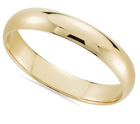 A Spanish bodas or wedding is a cheerful event, when families get even closer and celebrate together. In Spain, families are very tight-knit, especially the closest relatives – parents and children, siblings, grandparents and grandkids, etc. Traditionally, couples invited lots of relatives to a wedding to show them respect and share this happy day with them, so there were often at least 200 wedding guests. Though today, weddings got smaller and only close relatives and friends are invited. But still, there are wedding traditions that show how important it is for Spanish people to keep in touch and maintain good relationships with their immediate family.
A Spanish bodas or wedding is a cheerful event, when families get even closer and celebrate together. In Spain, families are very tight-knit, especially the closest relatives – parents and children, siblings, grandparents and grandkids, etc. Traditionally, couples invited lots of relatives to a wedding to show them respect and share this happy day with them, so there were often at least 200 wedding guests. Though today, weddings got smaller and only close relatives and friends are invited. But still, there are wedding traditions that show how important it is for Spanish people to keep in touch and maintain good relationships with their immediate family.
Engagement
In Spain, a bride-to-be wears her engagement ring on the ring finger of her left hand. And a wedding ring is put on the ring finger of her right hand.
The potential groom traditionally meets with his girl-friend’s father to ask for her hand in marriage. If the father agrees, the groom presents him with a watch as a gift of honor.
Wedding godparents
In Spain, there is a wedding tradition when the groom’s mother walks him down the aisle.
The bride also gets her father’s attention – he escorts her to the church, not just down the aisle.
His mother and Her father are called “padrinos” or “wedding godparents”, and they have another important task – they are the witnesses at the wedding and sign the papers together with the bride and groom.
Such traditions show the closeness of parents and children in Spain, even when kids grow up.
If a person doesn’t have a parent, a close friend or relative can become a wedding godparent.
No bridesmaids and groomsmen
At a Spanish wedding, there are no bridesmaids and groomsmen, no Best Man and Maid of Honor. As we’ve mentioned earlier, the couple’s parents serve as witnesses to the marriage.
13 coins as a gift
Spanish traditional Catholic weddings have another interesting tradition. The groom presents 13 coins in a special box or purse to his bride as a symbol of their future shared family budget. It means that he will share all his possessions with her during their marriage. These coins are called “arras” or “unity coins”. They are blessed by a priest.
Wedding dress
Spanish women love lace, and have been for centuries. So, a Spanish wedding gown usually is adorned with lace (it can be lace collar, sleeves, or hem of a dress). Sometimes, there is just a little lace detail, or the whole dress can be covered with lace.
The traditional Spanish bridal headdress is called “mantilla”. And it is also made from lace. It covers the head and shoulders of a bride. Often, the veil is complemented with a high comb called “peineta”.
Wedding bouquet
Spanish brides often use wedding bouquets made from orange blossoms. They symbolize purity and innocence. Orange trees are special because they bear fruit and flowers at the same time. But, of course, there are many other florals and color palettes for Spanish wedding bouquets.
Wedding reception
The wedding reception is called “banquete de bodas” or “convite” in Spain.
At a Spanish wedding dinner, the head table seats not only the couple but their parents as well – a table for six. Nowadays, when many couples get married when they already have children, the head tables often house their kids as well.
The menu always includes some local delicacies. And the cake is usually fruity and light.
During the reception, the wedding guests come to the head table and bestow their gifts to the couple. Also, the bride and groom go from table to table and thank the guests for coming, often giving them some small wedding favors. In the past, the wedding favors traditionally were a cigar for men and a pin or brooch for women. Today, though, it can be anything.
Wedding dance
A Spanish traditional wedding dance is called “seguidillas manchegas”. It’s very cheerful. This dance is a kind of money dance when the bride and groom dance with their wedding guests. Every guest gives a blessing and some money to the now husband and wife during the short time he or she dances with them.
Honeymoon
After the wedding, many couples go to their honeymoon called “luna de miel” in Spain. They travel or just spend some time together.

